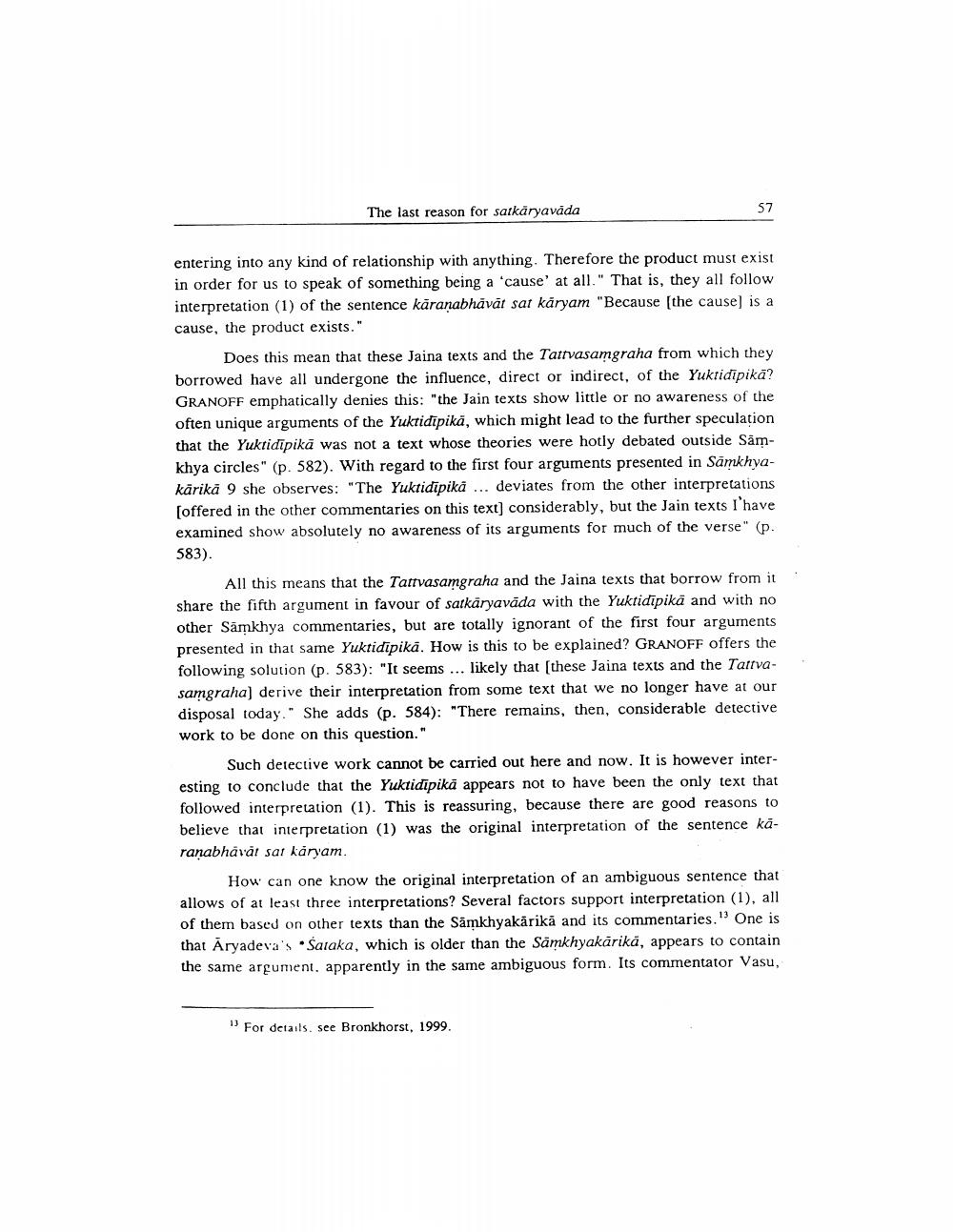Book Title: Last Reason For Satkaryavada Author(s): Johannes Bronkhorst Publisher: Johannes Bronkhorst View full book textPage 5
________________ The last reason for satkāryavāda 57 entering into any kind of relationship with anything. Therefore the product must exist in order for us to speak of something being a 'cause' at all." That is, they all follow interpretation (1) of the sentence käraṇabhāvāt sat kāryam "Because [the cause] is a cause, the product exists." Does this mean that these Jaina texts and the Tattvasamgraha from which they borrowed have all undergone the influence, direct or indirect, of the Yuktidipika? GRANOFF emphatically denies this: "the Jain texts show little or no awareness of the often unique arguments of the Yuktidipikā, which might lead to the further speculation that the Yuktidipika was not a text whose theories were hotly debated outside Samkhya circles" (p. 582). With regard to the first four arguments presented in Samkhyakärikā 9 she observes: "The Yuktidīpikā... deviates from the other interpretations [offered in the other commentaries on this text] considerably, but the Jain texts l'have examined show absolutely no awareness of its arguments for much of the verse" (p. 583). All this means that the Tattvasamgraha and the Jaina texts that borrow from it share the fifth argument in favour of satkaryavāda with the Yuktidipika and with no other Samkhya commentaries, but are totally ignorant of the first four arguments presented in that same Yuktidipika. How is this to be explained? GRANOFF offers the following solution (p. 583): "It seems... likely that [these Jaina texts and the Tattvasamgraha] derive their interpretation from some text that we no longer have at our disposal today." She adds (p. 584): "There remains, then, considerable detective work to be done on this question." Such detective work cannot be carried out here and now. It is however interesting to conclude that the Yuktidipikā appears not to have been the only text that followed interpretation (1). This is reassuring, because there are good reasons to believe that interpretation (1) was the original interpretation of the sentence käraṇabhāvāt sat karyam. How can one know the original interpretation of an ambiguous sentence that allows of at least three interpretations? Several factors support interpretation (1), all of them based on other texts than the Samkhyakärikā and its commentaries." One is that Aryadeva's Sataka, which is older than the Samkhyakärikä, appears to contain the same argument. apparently in the same ambiguous form. Its commentator Vasu, 13 For details. see Bronkhorst, 1999.Page Navigation
1 ... 3 4 5 6 7 8 9 10
